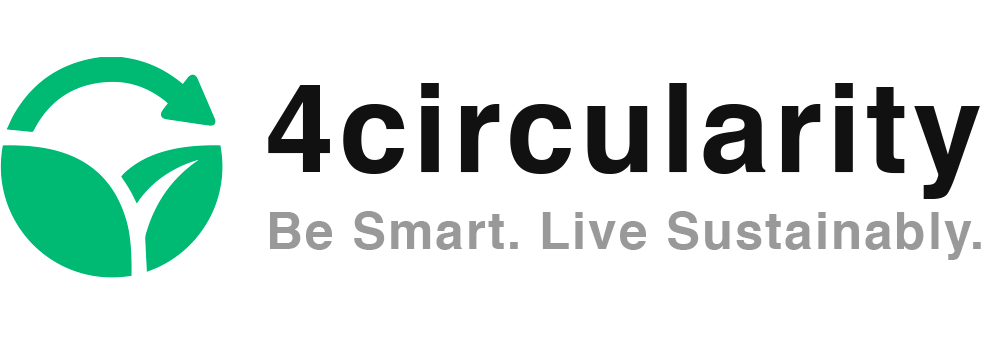What if we started to talk about the climate change with the same intensity as we talk about COVID-19?
What if the word “COVID” was replaced by “CLIMATE CHANGE” in all conversations we have daily with our family members, friends, colleagues, taxi drivers, hairdressers and children’s teachers? How would that sound?
Let me demonstrate what I mean by that to you:
“Hi! I got CLIMATE CHANGE.”
“Oh you do? You actually got it? Wow! What are your CLIMATE CHANGE symptoms?”
“Well, I feel very ill. My temperature is rising, water runs from my nose and I cannot breath properly.”
“Have you taken the CLIMATE CHANGE test?”
“I did. And it’s positive. I’m not sure where I got it. It spreads so fast. New CLIMATE CHANGE variants keep appearing around the world. We will all have it sooner or later.”
“Is that true? Is CLIMATE CHANGE dangerous? There must be a way to make it stop spreading so fast?”
“Yes, it is dangerous. It affects to our health and how we live. It also influences negatively to the economy, how we perceive insecurity and how we work, for example. There is a cure for it. We can stop it all together. By taking action.”
What can I do? Should I tell about it to everyone I know? It seems so urgent. How we are behaving must change. We must take action all together like you said!
“Listen carefully, I came up with a plan. Let me tell you about it…”
“Wait, just a second. I got to hear this. Where did I put my mask again?”
If COVID communication was turned as CLIMATE CHANGE communication?

COVID-19 has had airspace in a daily basis for over two years now. The daily progress of the spreading virus is communicated to people at least once a day. National health authorities provide updated data on new cases, and deaths every day of the week. We can filter easily 7-day, 2-week or 6-month averages per country to present the actual progress of the situation.
COVID data is well structured. Countries calculate it in the same way which makes it also comparable. Consequently, the data is country based, region based and even city based. It is accurate, reliable, transparent and timely.
The progress is visualized in clear data dashboards for what you don’t have to be a data scientist to understand. The charts and infographics show the change since the start of the pandemic which indicates the baseline. The target is very clear, aiming at zero new cases and zero additional deaths due to the Coronavirus. So, the goal is to lower the curve.
I can just wonder how fast we came up with all this global action fighting against COVID-19. Decision-making has been fast, pivoting decisions, putting place laws and regulations that directly concern people’s lives. The fight against the CLIMATE CHANGE seems not to be as urgent. Because not everyone can feel the immediate impact of it. Yet.
Vaccination coverage vs. active climate action

Also the vaccination coverage could be compared to the current state of climate action that differs among countries. Today, the inequity in vaccine coverage is wide between countries. The range varies between 1-70% depending on the wealth of the country. The goal is that by mid-2022, the coverage would be 70% globally. Ensuring equitable access to vaccines requires strong international cooperation and partnerships. More wealthier countries helping less wealthy countries in sharing resources is crucial in meeting the goal. Without working together the goal remains unfulfilled.
Same goes with the climate change. What if the percentage of vaccine coverage equals to active climate action? By mid-2022 the active climate action would reach 70% globally. Meaning that by that time every country had 70% of all their promised climate actions achieved.
We would measure this with similar methodology as we are measuring currently the vaccine coverage. Showing the progress transparently to people whenever they typed on Google “climate action + Finland”, or “climate actions + The Netherlands”, for example.
Being provided the status of every climate action by country, the environmental, social and governance (ESG) actions, people would be able to visualize the holistic view of the situation and ideally compare the data from one country to the other.
However, for COVID it was rather easy to choose the KPIs (Key Performance Indicators) as we wanted to count the number of new cases, recoveries, people gone to intensive care and deaths. But what we didn’t have in the beginning was the way to identify people who had COVID. So, what happened was that we created the COVID-19 test or PCR test in no time to give us the results. Once we had the test we created the first vaccine.
What the PCR tests and vaccines are for COVID is what the the non-emitted CO2 emissions are for the climate change. More data and information increases understanding that grows motivation which feeds more action.
Visualize the end of COVID and climate change

The visualization exercise is often very powerful tool in bringing us faster to our goals. Whether they are collective or personal, by visualizing ourselves achieving something, a bigger challenge, is already almost half of the effort.
I am certain that everyone has at one point said during these last two years:
“I hate CLIMATE CHANGE! If just the things would go back to normal. I cannot stand wearing these masks anymore. I am done with working from home.”
Tackling both CLIMATE CHANGE and COVID-19 needs to be seen as a collective goal. For COVID we quickly came up with tools to manage the situation. We got laws, regulations, recommendations, lockdowns, curfews, PCR tests, vaccines, masks and fact sheets for communication. All these “tools” to control the pandemic and find our way out of it.
When it comes to the climate change the scientists and researchers first officially announced in 1990 First IPCC Assessment Report (FAR) climate change as a challenge with global consequences and requiring international cooperation. We have known about the changes in the climate already since the early 1900s but started taking action only recently.
There is Paris agreement, Agenda 2030, United Nations Sustainable Development Goals (SDGs), EU Taxonomy, UK ten point plan, Race to Zero and many other frameworks and initiatives which sole goal is to make the world low carbon by cutting the CO2 emissions by half by 2030. But we are leaving behind with all of these goals.
Climate change has been scientifically proven, we have the data and the plans ready. We only lack breaking it down into smaller, concrete actions and starting right away to move forward with them. KPIs needs to be identified. Measurement is important because how we otherwise can follow the progress and communicate it as we do with the COVID-19 data?
Is COVID-19 or CLIMATE CHANGE more bigger thread?

The similarity with COVID-19 and the CLIMATE CHANGE is that we cannot see them with bare eyes. We can only see the damage they make.
At this point in the COVID-19 pandemic most of us know someone who knows someone who have been in intensive care, had severe disease or even worse, lost their lives. Similarly in CLIMATE CHANGE we all have seen the destruction what wild fires, heat waves, flash floods, drought, heavy storms and sea water rise is causing. Either through our own eyes or through a lens.
- Missing some climate change facts? Read more about the impacts of climate change in my previous blog post What are the impacts of climate change?
Bare eye or no bare eye the thread is there. You want to heal yourself from COVID. Are you ready to change your habits and behavior to heal us all out from the climate change?
By no means I say that the coronavirus pandemic is less important topic but I do think that climate crisis is many times bigger thread to the humanity and the planet Earth than COVID-19 is.
Like Bill Gates says in one of his articles on Gates Notes “as awful as this pandemic is, climate change could be worse.”
For humans it is hard to think about anything else than the closest thread. Climate change seem to be still too far in the future. Although if we would just open our eyes we would see the connection.
Be Smart. Be Safe. Live Sustainably.
